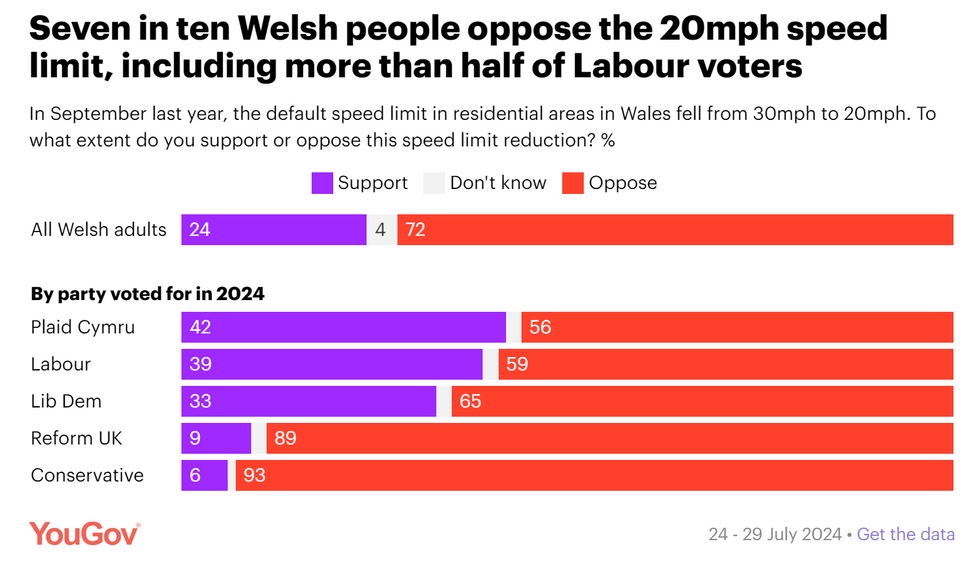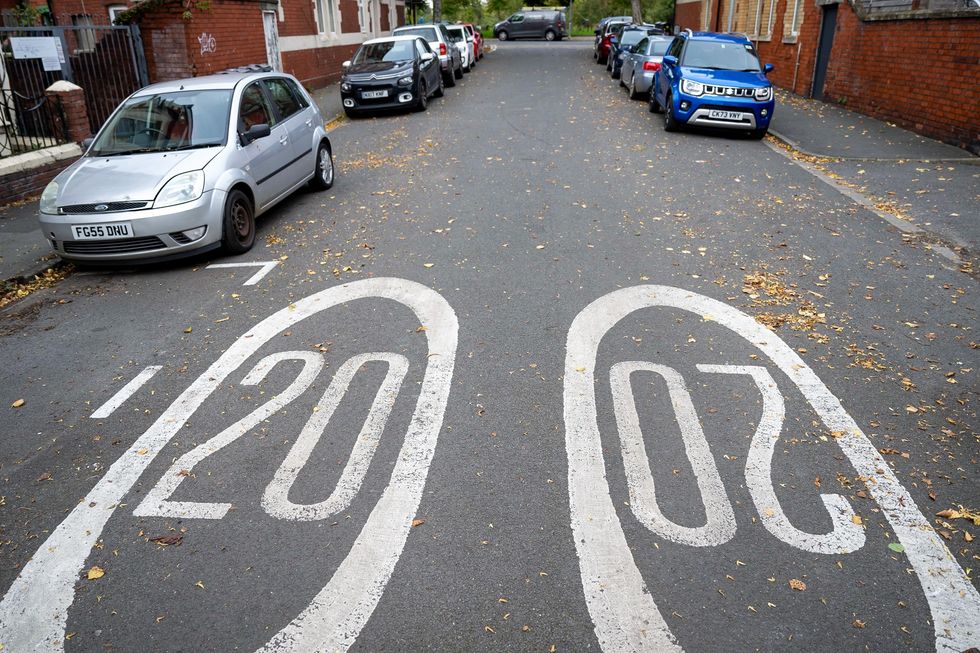In 2023, the Welsh Government initiated a changeover from 30mph to 20mph speed limits in built-up areas such as villages and town centres.
The move by the Welsh Government has proved controversial with an online petition against the reduction of speed limits becoming the most popular in the Senedd’s 25-year history, gaining nearly 470,000 signatures at the beginning of this year.
Additionally, a YouGov study in August found seven in 10 Welsh people opposed the default 20mph speed limit.
A further four in 10 people polled said they regularly break the speed limit which has been proved true in the latest speeding data for September.

A YouGov poll found four in 10 people say they regularly break the speed limit
YouGov
According to the latest GoSafe data for last month, another 13,500 drivers were caught speeding on 20mph roads in Wales.
The average speed for motorists to face enforcement action was just over 28 mph, but the highest one was caught doing 85mph in north Wales.
Nearly 25,000 vehicles were monitored in September, and 95 per cent were found to be driving at 25 mph or less, which means they will not face action.
So far since enforcement action started, more than 52,000 drivers have been caught driving above 26mph.
Journeys are also taking longer on most routes with 20mph speed limits, according to newly published data.
Transport for Wales said generally motorists face an extra two minutes to their journey time.
The report confirmed earlier published figures that 58 per cent of vehicles were being driven at or below 24mph and that average speeds had fallen 4.3mph on 20mph main through roads since last September.
Politicians in Wales introduced the 20mph speed limit in part because they believed lower speeds would improve air quality.
However, data on whether the new speed limit was having an impact on air quality was still inconclusive when NO2, or nitrogen dioxide readings, were compared.
In May this year, a study funded by the Welsh Government found NO2 levels on roads inside and outside the 20mph zone were insignificant.
Out of four sets of sensors deployed as part of an official study, three recorded small increases and decreases that were within the sensors’ margin of error, making the findings statistically meaningless.

The average speed for motorists to face enforcement action was just over 28 mph in September
Getty
LATEST FROM MEMBERSHIP:
Natasha Asghar, the Welsh Tories’ shadow transport minister in the Senedd, said at the time: “This blows a huge hole in the argument that lower speed limits will improve air quality.
“With two locations helping air quality and two hindering air quality, I don’t believe that the data can accurately ascertain whether lower speed limits are making a difference to overall air quality.
“I fear that when results come in from across all monitored speed limit changes, we will see Labour pushing the button on their road charging plans, as their only option to get commuters off the roads.”
In the official study, carried out by scientists from civil engineering consultancy Jacobs, pairs of sensors were put on roads that straddled the 20mph zone’s borders, with one pair being inside and one outside.
But sensors picking up levels of NO2, a harmful gas emitted by petrol and diesel-engine vehicles, recorded differences inside and outside the 20mph zones that were insignificant.
A Welsh Government spokesman said in May: “We have never claimed 20mph would make a material difference to air quality and to suggest otherwise is simply disingenuous.”
However, Vaughan Gething, the First Minister, previously told the Senedd: “Well, of course the 20’s Plenty campaign was predicated on an improvement to air quality and improvement to safety as well.”